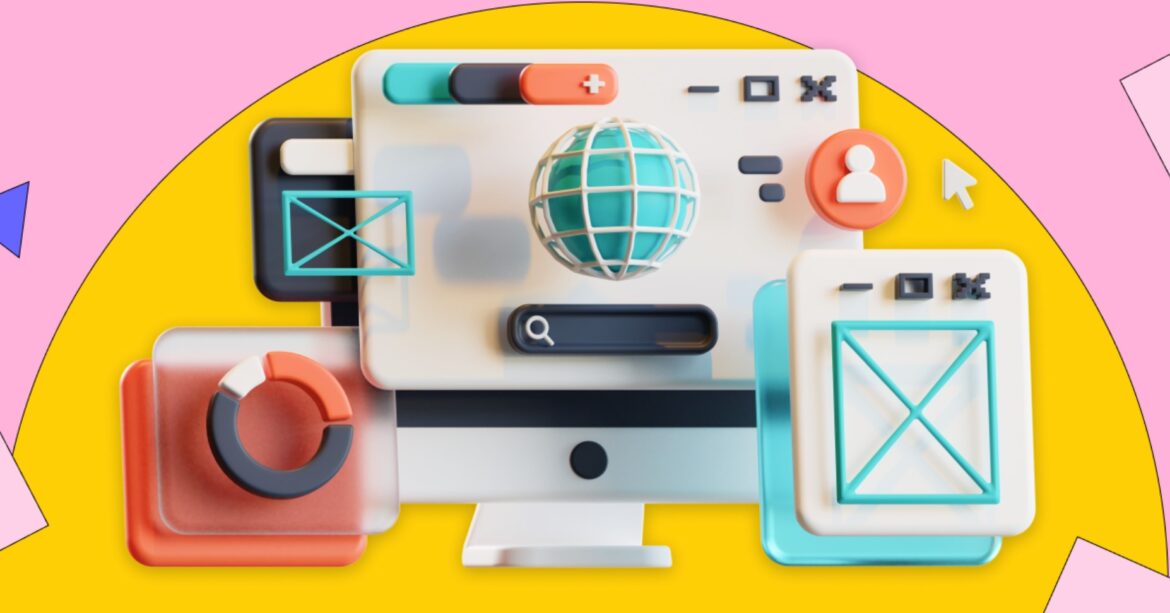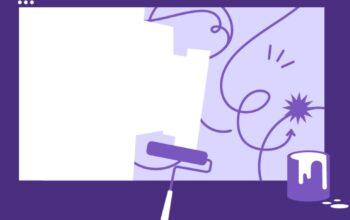In today’s digital age, web design plays a crucial role in captivating and engaging website visitors. With the advancements in technology, web designers have access to various tools and techniques to create visually stunning and interactive websites. One such technique that has gained immense popularity is the integration of 3D elements into web design. In this article, we will explore how to add interactive effects with 3D in web design, providing you with valuable insights and practical tips to elevate your web design projects.
1. Understanding the Basics of 3D in Web Design
What is 3D in Web Design?
3D in web design refers to the incorporation of three-dimensional elements and effects into websites. It allows designers to create a more immersive and interactive experience for website visitors. By leveraging 3D technology, designers can add depth, realism, and interactivity to various web elements, including images, menus, and animations.
Why Should You Use 3D in Web Design?
Using 3D in web design offers several advantages. Firstly, it enhances visual appeal and makes websites stand out from the competition. The use of 3D elements can create a sense of depth and realism, making the website more engaging and memorable for users. Additionally, 3D effects can improve user interaction by providing interactive elements and animations that respond to user actions, resulting in a more intuitive user experience.
2. Getting Started with 3D in Web Design
Setting Up Your Development Environment
Before diving into 3D web design, you need to set up your development environment. This involves installing the necessary software and tools. Some popular software choices for 3D web design include Unity, Blender, and Three.js. Ensure that you have the latest version of these tools and that your computer meets the system requirements.
Choosing the Right 3D Framework or Library
To simplify the process of adding 3D effects to your web design, you can leverage existing 3D frameworks and libraries. These frameworks provide pre-built components and functions that you can use to create interactive 3D elements. Some popular 3D frameworks for web design include Three.js, Babylon.js, and A-Frame. Choose a framework that aligns with your project requirements and familiarity with programming languages.
3. Adding 3D Effects to Web Elements
1. Enhancing Images with 3D Effects
- One effective way to incorporate 3D in web design is by enhancing images with 3D effects. You can achieve this by using parallax scrolling, where the foreground and background elements move at different speeds, creating an illusion of depth. Another technique is image mapping, where specific regions of an image are mapped to different links or actions, providing an interactive experience for users.
2. Creating Interactive 3D Menus
- Interactive 3D menus can significantly enhance user experience on your website. By using 3D effects, you can create visually appealing menus that respond to user interactions. For example, you can design a 3D menu where items rotate or scale when hovered over, providing users with a unique and engaging navigation experience.
3. Integrating 3D Models into Web Pages
- Integrating 3D models into web pages allows you to showcase products, designs, or concepts with an interactive approach. You can import 3D models created in software like Blender or 3ds Max and render them in real-time using web technologies. This enables users to explore and interact with the models, zooming in, rotating, and viewing them from different angles.
4. Implementing Interactive 3D Animation
Keyframing and Animation Techniques
Keyframing is a popular technique in 3D animation that involves defining specific poses or positions at different points in time. By interpolating between these keyframes, you can create smooth animations. Additionally, you can leverage physics-based animation techniques, such as simulating gravity or collisions, to add realistic motion to your 3D elements.
Adding Interactive Transitions
Interactive transitions make the user experience more dynamic and engaging. By creating seamless transitions between different 3D scenes or elements, you can guide the user’s attention and create a sense of continuity. For example, when transitioning between pages, you can animate the 3D elements to smoothly morph or fade into the new content, providing a visually pleasing effect.
Creating Realistic 3D Motion Effects
Realistic motion effects add a touch of authenticity to your 3D designs. You can simulate natural movements, such as bouncing, swinging, or rotation, to make your 3D elements feel more alive. By combining keyframing techniques with physics simulations, you can achieve lifelike animations that captivate your website visitors.
5. Optimizing 3D Performance for Web
1. Efficient Asset Loading and Caching
- To ensure optimal performance, it’s crucial to optimize asset loading and caching. Compress your 3D models, textures, and other assets to reduce file sizes without compromising quality. Use techniques like texture atlases to minimize the number of texture files loaded by the browser. Additionally, leverage browser caching to store assets locally, reducing subsequent load times.
2. Using Lightweight 3D Models and Textures
- Choose lightweight 3D models and textures to minimize the impact on page load times. Simplify complex 3D models by reducing polygon counts or removing unnecessary details. Similarly, optimize textures by resizing them to appropriate dimensions and compressing them using formats like JPEG or PNG.
3. Leveraging Browser Rendering Techniques
- Web browsers offer various rendering techniques that can optimize the performance of your 3D designs. For instance, hardware acceleration allows the browser to offload rendering tasks to the computer’s GPU, resulting in smoother animations and interactions. Additionally, you can leverage modern web APIs like WebGL and WebGPU to unlock the full potential of 3D rendering in the browser.
6. Best Practices for Responsive 3D Design
When incorporating 3D elements into web design, it’s crucial to ensure that your designs are responsive and compatible with different devices. Here are some best practices to follow for responsive 3D design:
| Best Practice | Description |
| Ensuring Cross-Device Compatibility | Test your 3D effects on various screen sizes and resolutions to ensure they adapt gracefully. Use media queries and responsive design techniques to adjust the size, placement, and behavior of your 3D elements based on the user’s device. |
| Adapting 3D Elements to Mobile Devices | Mobile devices have specific constraints and limitations. Optimize 3D experiences for mobile by reducing complexity, using lower-resolution textures, and minimizing simultaneous 3D elements on the screen. Strike a balance between visual quality and performance on mobile devices. |
| Designing for Touch and Gesture Interactions | Design 3D interactions that accommodate touch and gesture inputs. Implement intuitive touch controls, such as pinch-to-zoom or swipe gestures, to allow users to interact with 3D models or navigate through 3D scenes. Ensure touch interactions are responsive and provide appropriate feedback to the user. |
Following these best practices will ensure that your 3D designs provide a seamless and engaging experience across different devices.
Remember, responsive 3D design plays a vital role in capturing and retaining user attention, regardless of the device they’re using. By implementing these best practices, you can create visually stunning and interactive 3D designs that adapt to the needs and capabilities of each user’s device.
7. SEO Benefits of 3D in Web Design
Enhancing User Experience and Engagement
3D elements in web design have the potential to enhance user experience and engagement, leading to longer page visits and increased user satisfaction. The interactive and visually appealing nature of 3D effects can captivate users’ attention, encouraging them to explore and interact with your website for an extended period.
Increasing Dwell Time and Lowering Bounce Rate
Dwell time refers to the duration users spend on a webpage before returning to search results. By incorporating interactive 3D elements, you can provide an immersive experience that entices users to stay longer on your website. This increased dwell time signals search engines that your content is valuable and relevant, potentially improving your search engine rankings. Additionally, 3D effects can lower the bounce rate by reducing the number of users who quickly leave your website after arrival.
Generating Organic Backlinks and Social Shares
High-quality and engaging content, such as websites with interactive 3D effects, are more likely to attract organic backlinks from other websites. When users find your 3D web design valuable and unique, they may link to it in their own content, signaling to search engines that your website is a trusted resource. Furthermore, visually stunning and interactive 3D designs tend to receive more social shares on platforms like Facebook, Twitter, and Pinterest, expanding your reach and driving additional traffic to your website.
8. Common Challenges and Troubleshooting Tips
▪ Compatibility Issues with Older Browsers
- Implementing 3D effects in web design may encounter compatibility issues with older browsers that lack support for modern web technologies like WebGL. To address this, consider providing fallback options for older browsers, such as displaying alternative 2D content or simplified versions of your 3D effects. Additionally, educate your users about the importance of using up-to-date browsers for the best browsing experience.
▪ Performance Optimization Techniques
- To ensure optimal performance, optimize your 3D designs by employing various techniques. Minimize the number of draw calls by combining multiple 3D elements into a single object where possible. Use efficient shaders and materials that don’t excessively tax the GPU. Finally, profile and measure the performance of your 3D designs using browser developer tools to identify potential bottlenecks and areas for optimization.
▪ Dealing with 3D Rendering Glitches
- Rendering glitches can occur when rendering complex 3D scenes or animations, resulting in flickering, artifacts, or visual inconsistencies. To mitigate these issues, double-check your 3D assets for any irregularities or errors. Adjust the level of detail and complexity in your 3D models to ensure smooth rendering. If glitches persist, consider simplifying your scene or employing alternative rendering techniques.
9. Frequently Asked Questions (FAQs)
1. Can I use 3D in web design without coding experience?
Absolutely! While having coding experience can provide more flexibility and control, there are user-friendly 3D frameworks and tools available that require little to no coding knowledge. These tools often offer a visual interface or drag-and-drop functionality, allowing designers to create impressive 3D effects without writing code.
2. Which programming languages are commonly used for 3D web design?
When it comes to 3D web design, some commonly used programming languages are JavaScript, HTML, and CSS. JavaScript is particularly important for interacting with 3D frameworks and libraries like Three.js. HTML and CSS are essential for structuring and styling the web page containing your 3D elements.
3. Are there any performance limitations when using 3D in web design?
While adding 3D effects to web design can enhance user experience, it’s important to consider the potential performance impact. Rendering complex 3D scenes or utilizing high-resolution textures may increase the load time and strain the user’s hardware. To mitigate performance limitations, optimize your assets, implement efficient rendering techniques, and test your designs on various devices and browsers.
4. How can I ensure cross-browser compatibility for 3D effects?
To ensure cross-browser compatibility, use 3D frameworks or libraries that have extensive browser support, such as Three.js or Babylon.js. These frameworks handle many of the browser compatibility issues for you. Additionally, consider providing fallback options for older browsers that don’t support modern web technologies, allowing users to still access your content in a meaningful way.
5. What are some popular 3D frameworks and libraries for web design?
There are several popular 3D frameworks and libraries available for web design. Some of the widely used ones include Three.js, Babylon.js, A-Frame, and PlayCanvas. Each framework has its own strengths and focuses, so choose the one that best suits your project requirements and development skills.
6. Are there any specific industries where 3D web design is most beneficial?
3D web design can benefit a wide range of industries. It is particularly valuable in industries like e-commerce, architecture, gaming, and entertainment, where visual appeal and interactive experiences are essential. By incorporating 3D effects, these industries can showcase products, designs, or virtual environments with a higher level of engagement and realism.




